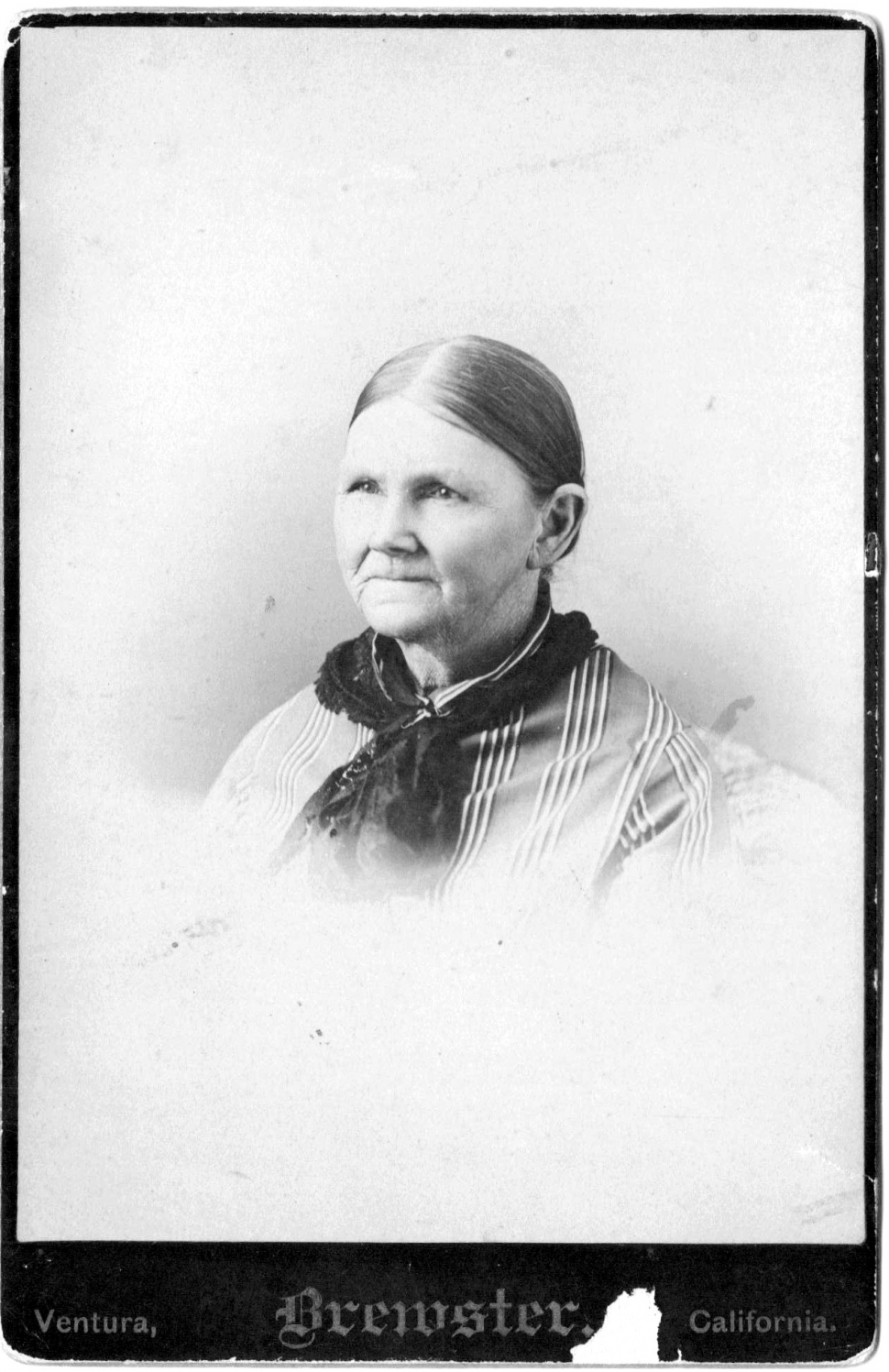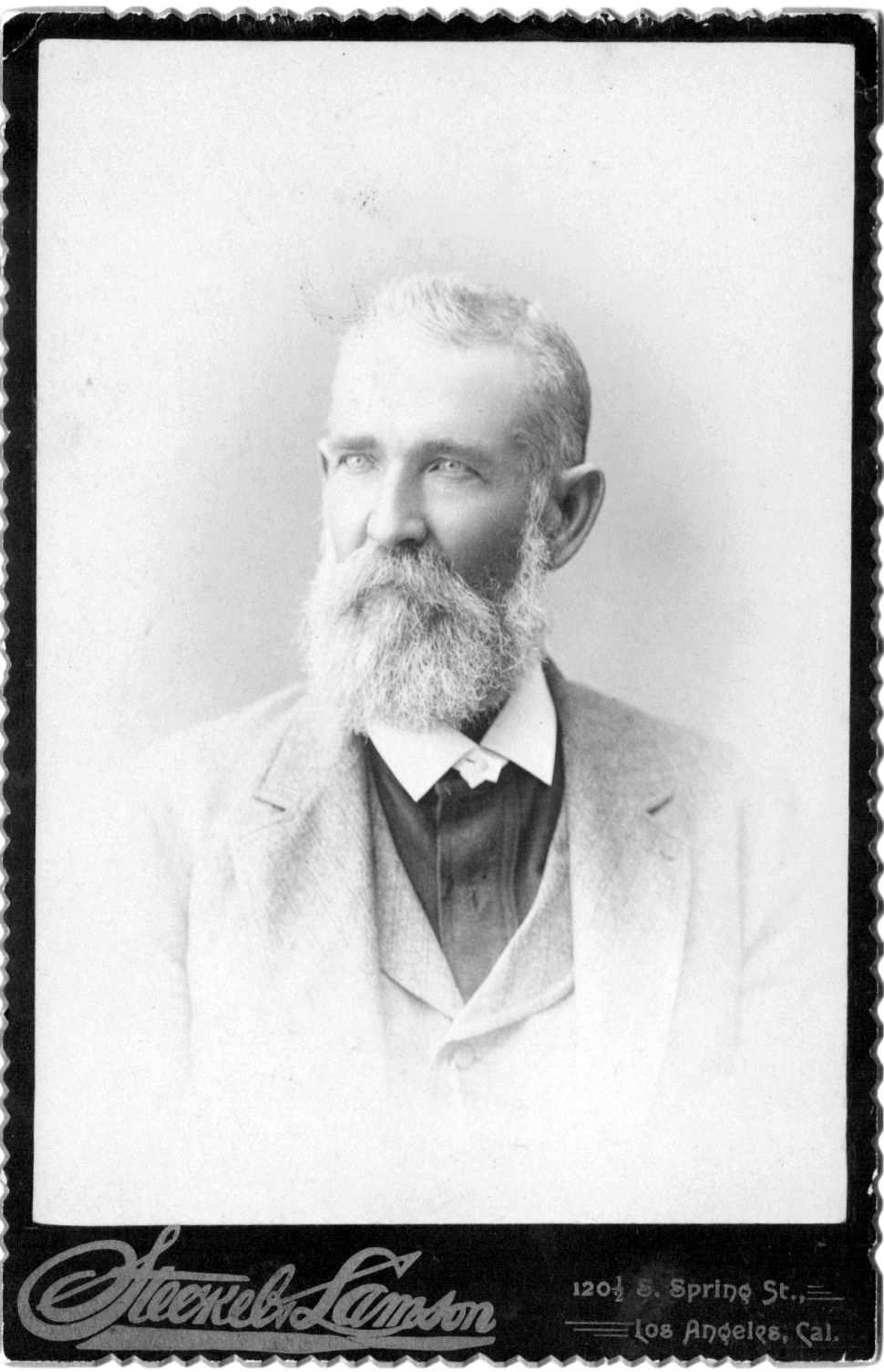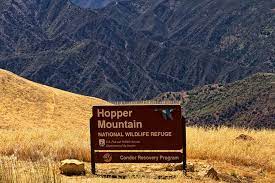|
The Story of Hopper Canyon
By Gazette Staff Writers — Thursday, July 13th, 2023
 Above is Ari Hopper’s wife Susannah Easley Hopper.  Above is Ari Hopper, Photos courtesy Fillmore Historical Museum.  Pictured above is Hopper Mountain National Wildlife Refuge as of today. The Refuge is closed to public access due to the sensitive nature of California condor recovery efforts and physical access limitations, like no public roads leading to the Refuge. Find out more info at https://www.fws.gov/refuge/hopper-mountain. Photos courtesy Fillmore Historical Museum.  Pictured above is the Ari Hopper Land Claim, c. 1887. Photo courtesy Fillmore Historical Museum. Courtesy Fillmore Historical Museum We’ve all seen the sign for the Hopper Canyon turnoff on Highway 126 between Fillmore and Piru. But how did it get its name? Were there large grasshoppers there or an abundance of rabbits? No, it was named for one of the earliest pioneer families – the family of Ari and Susannah Hopper. Ari Hopper was born in Lafayette, Missouri in 1923 to William and Nancy Armstrong Hopper. He was one of four boys, all of whom migrated to California. Susannah was one of nine children born to Stephen and Rebecca Cunningham Easley. Besides Susannah, her brothers Pleasant, Samuel and Warham came to California. Sister, Missouri, married Benjamin Warring and settled on the Buckhorn Ranch near Piru. The Easley’s parents also came west. Ari and Susannah married in 1845 in Missouri and came to California in 1852 and first lived in the other “Santa Clara” up north before coming to our valley in the late 1860s. The 1870 census found them in Township 1 of Santa Barbara County in the San Buenaventura Post office. At that time Ventura County was part of Santa Barbara County. According to the census they were living near Stephen Easley (Susannah’s father) and Benjamin Warring. Ari Hopper was one of those historical figures who seemed larger than life. He was known for at least three things: being a great bear hunter, having a presence and voice which commanded attention, and being a master of pit cooking meat. “Old Ari Hopper has had more queer experiences with bears than anybody. He has given up hunting now, but he used to be the greatest bear-killer in the mountains. Ari has a voice like a steam, fog-horn—the effects of drinking a bottle of lye one night by mistake for something else, and when he speaks in an ordinary tone you can hear him several blocks away. You can always tell when Ari comes to town as soon as he strikes the blacksmith’s shop up at the cross-roads and says, ‘Holloa’ to the smith. Ari was out on the Alamo mountain one day and got treed by a big black bear—” “A black bear on the Alamo?” interrupted Dad. “There ain’t nothing but Grizzlies and Cinnamons over there. I was over there once—” “Hold on, Dad, it’s my turn yet. You never heard of a Grizzly climbing a tree, did you?” “The bear treed Ari,” resumed the other, “and just climbed up after him in a hurry. Ari went up as high as he could and then shinnied out on a long limb. The bear followed, and Art kept inching out until he got as far as he dared trust his weight. The bear was climbing out after him and the limb was bending too much for safety when Ari yelled at the bear: ‘Go back, you’d——d fool. You’ll break this limb and kill both of us. Want to break your cussed neck, goldarn ye?’ “Well, sir, that bear stopped, looked at Ari, and then down to the ground, and then he just backed along the limb to the trunk, slid down and lit out for the brush. Ari swears that the bear understood him. Bears have a heap of sabe, but I’m inclined to think that it was Ari’s stentorian roar that scared him away.” Ari seems to have been very adept at tree climbing. “Sunflower” reported in the July 14, 1883, Ventura Signal that, “Uncle Ari was out looking for a cow that had a young calf. He found the cow but could not find the calf so he set the dogs on the cow to make her hunt it up, but instead of running to her calf she ran Ari up a tree, and he climbed pretty lively for an old man.” Ari wasn’t the only renowned bear hunter in the family. The May 1, 1880, Ventura Signal reported Mrs. Ari Hopper had recently dispatched a large grizzly. In September of the same year, the Signal noted that Mrs. Hopper had killed an eagle with a wingspan of 7’ 2" and on the same day killed a rattle snake. It should also be noted that Mrs. Hopper regularly “supplied the venison” for the 4th of July barbecues, Throughout the 1870s and 1880s, Ari Hopper was called on to oversee the cooking of the meat for any gathering, with the venison frequently supplied by his wife. He oversaw barbecues in Sespe, Ventura and in Santa Paula. In 1875 he was in Santa Paula and according to the Ventura Signal of July 10 of that year, Ari knew “just how to roast an ox to perfection.” At least once Ari’s skill as the pit master and as an orator met. For the 4th of July in 1891 the new community of Fillmore celebrated the day conveniently close to the Sespe station (probably Kenney grove) with a major event. The cooking of the meat was of course under the eye of Ari Hooper Entertainment included the Ventura City Band, the Sespe Choir singing “We will Stand by the Flag,” and the Declaration of Independence read by C. J. McDevitt of the Santa Paula Chronicle. The main event was a speech by Thomas Toland of Ventura. Toland by 1891 was practicing law in Ventura, having previously practiced in Santa Paula in the firm of Toland and Guiberson. He was considered an up and coming orator. On this day he was not able to start his speech until 12:15. As one writer recalled in 1906 “He (Toland) was twisting the lions tail and tearing the red coats to tatters throwing cargo and cargo of tea overboard in Boston Harbor. He was just in the prettiest of his talk. That particular place where an orator knows he will make a hit. All of a sudden and when the crowd was hanging on to his word with mouths agape, a stentorian voice broke out. Ari Hopper opened his mouth, and from “yon mountain to yon mountain,” to quote T. Wallace More, there went the reverberating sound. “The meat is done.” Toland found himself talking to the atmosphere and the side of the hill.” Toland later said he had never been left alone so suddenly. In 1897, Rebecca Hopper Riley, Ari and Susannah’s daughter died. She and her family had been living in Covina. Ari and Susannah apparently moved to Covina to be closer to their motherless grandchildren. It was there on January 21, 1898, that Ari was killed. According to the Los Angeles Herald, Ari was going rabbit hunting with his grandson. While driving his buggy down a wash, his shotgun slipped out of the buggy, the hammer striking the front axle. The full load of number 5 shot lodged in Ari’s side. He told his grandson he was fatally shot. He only lived a short time. Together Ari and Susannah had six children with three living to adulthood. Susannah passed away in Covina in 1905. |
